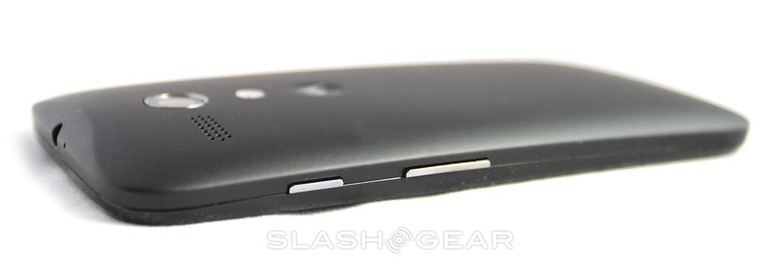Motorola talks Android, Wearables & Nest: The SlashGear Interview
It's fair to say Motorola had a big 2013, and SlashGear sat down with Steve Horowitz, senior VP of software engineering, and Steve Sinclair, VP of product marketing, at CES last week to talk wearables, contextual ecosystems, and the Internet of Things. The Google-owned company kicked off a new smartphone strategy, epitomized by the always-listening Moto X and the shockingly-affordable Moto G, arguably just as notable for what it left out of its products as what it chose to include. Meanwhile – and topical, given Google has just acquired Nest – we also talked about Motorola's place in the smart home, and where former Android project lead Horowitz sees the smartphone fitting in. Read on for the full interview.SlashGear: 2013 was an important year for Motorola. What do you see as the highlights?Steve Horowitz: "We've been very pleased [with 2013], it's been a very busy year for us. We've been basically reinventing a brand; re-establishing a brand, and a company, and in the process trying to get products out. We've been very pleased with Moto X in terms of showcasing what can be done if you take a few things and focus on them and do them right. And if you take what is effectively a great core Android experience, and you enhance it rather than modify or compete with it, that's really been our focus on the software side, frankly start over from scratch."
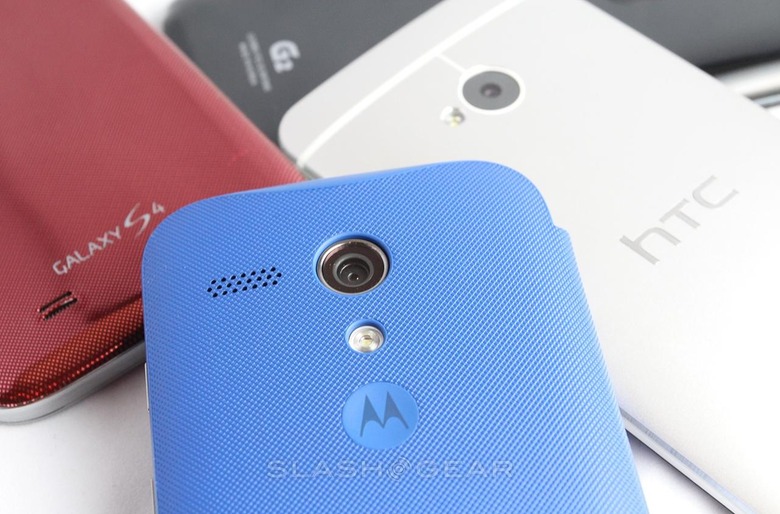
"By doing that we think we've been able to show again what, in a phone that maybe isn't the highest spec ever, by focusing on the entirety of the experience, and dedicated processors, and very tightly integrated software and hardware, we can deliver a phone that we think has a great experience in the Moto X, and then the Moto G we're very pleased with the response we've seen from that device, where by taking a clean approach we've been able to build a device where we think it has every ability to keep up with the big boys in terms of performance because we just do less and frankly get out of the way with most things."
SlashGear: We've seen a shift over the years with Android, from the days where companies felt they needed to customize it.Steve Horowitz: "Early on, in Android, there were two reasons people would modify it. Maybe there were shortcomings with things that the team just didn't have time to get to, and in other cases – more often than not – OEMs just wanted to differentiate, they didn't want to ship something which was stock. At this point, I know the team very well and Android has a great basic experience, so we're just letting that shine, and we don't need to differentiate ourselves. In fact, you could argue that we're differentiating ourselves by not differentiating."SlashGear: Something we've been writing about a lot over the past eighteen months is the idea of a more contextual ecosystem, devices that don't wait for you to go asking for something, but which are more proactive in feeding you information. The Moto X fit into that ethos very interestingly: it was there listening, you didn't have to wake it up, you just spoke to it. Is that a particular area of interest in 2014?Steve Horowitz: "You'll continue to see us pursue contextually aware or assisted devices. If you look at what we've done, the word "active" keeps coming to mind: so, we have an active display so rather than you, because of some blinking light, having to go figure out what's going on, we bring the key information to you. The phone becomes relevant in the context that it's in. So, if you're driving, it knows that, so it no longer tries to get you to interact with it in a highly intensive way. It gives you the voice interaction model, it reads things to you. So we're big believers in this idea of the phone doing the right thing in the context that it's in."SlashGear: Anything that talks about that ends up tipping into wearables, the idea that we'll have more distributed computing – multiple things we're carrying or wearing, in our bag or our pocket, or on our face somewhere. Google is arguably leading the way with one approach with Glass, and you're a Google company; how do you see things like Glass fitting into Motorola's direction?Steve Horowitz: "Wearables is obviously an area which is getting a lot of interest in the industry; I think it's very very early. As you've seen us with Moto X and Moto G, we're trying to do just a few things and do them right, while still being very much aware of what's going on in the industry. We're also very aware that phones do not exist in isolation; one example of that would be our Bluetooth authentication, trusted devices."
"The fact is, if you're in your car, if you've got a Bluetooth headset connected, why shouldn't your phone just be unlocked for you? So we're highly aware that phones are part of a broader ecosystem, you'll see us explore things in terms of how we interact and make the phone better by how it interacts with other devices."
Steve Sinclair: "We're no strangers to wearables, we've had watches and of course Bluetooth headsets and others, so we're actually quite capable to expand on that if we choose to. Again, it comes down to focus."
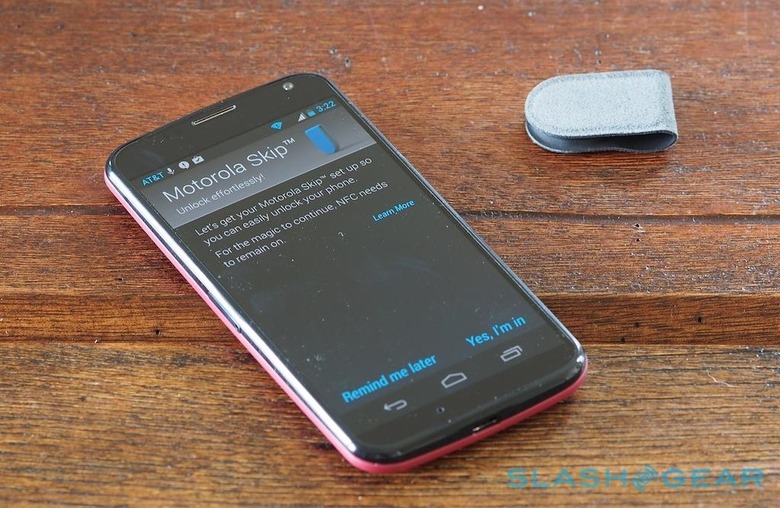
SlashGear: When people say "wearables" they often think of something like Glass, but you've talked before about digital tattoos, electronics you could swallow...William Moss (Corporate Communications): "I would point out that that stuff is extremely experimental and not anything that's even close to being productized. Regina [Dugan]'s group, they're definitely the forward thinkers down there... but very interesting stuff."Steve Horowitz: "If you consider the wearables space overall, the two areas that have seen the most traction have been wrist-worn devices – whether they're active bracelets or, the very very early on watches – or Google Glass, and in both cases you're arguably displacing something because I've got a watch, I have glasses. So, there's a tension there which has to be weighed, in terms of utility versus aesthetics. And so I think it's going to be an interesting area to watch develop."SlashGear: Intel has talked this week about its wearables project, and how it won't try to do it all in-house: it will provide the technology and look to designers. The attitude is that wearables need to be fashionable if people are going to actually wear them. Do we need to have more fashion in devices?Steve Horowitz: "We're big believers in choice. If you look at Moto X and Moto Maker, and even Moto G, it's about the consumer making a statement that's personal to them. Whether it's the color of the back, or even the material, or the replaceable backs of the Moto G. One of the things that people do with phones very often is they go out and get a case, not just for protective reasons but for aesthetic reasons. So in my mind there is not going to be a one-size-fits-all solution for wearables, you really need to find the right trade-off between the expressive versus the functional."Steve Sinclair: "It's unfair to make people trade-off and compromise on style just to get to a technology."William Moss: "As to how that might affect us, I think we've taken different approaches at different times as we feel best suits the product. So we make headsets, both for Bluetooth but also for music listening. It certainly didn't stop us from partnering with SOL Republic when we felt like there was an opportunity to work with them alongside the Moto X launch. So it's ultimately about what best serves the customer and what best serves the product that we're working on at the moment."
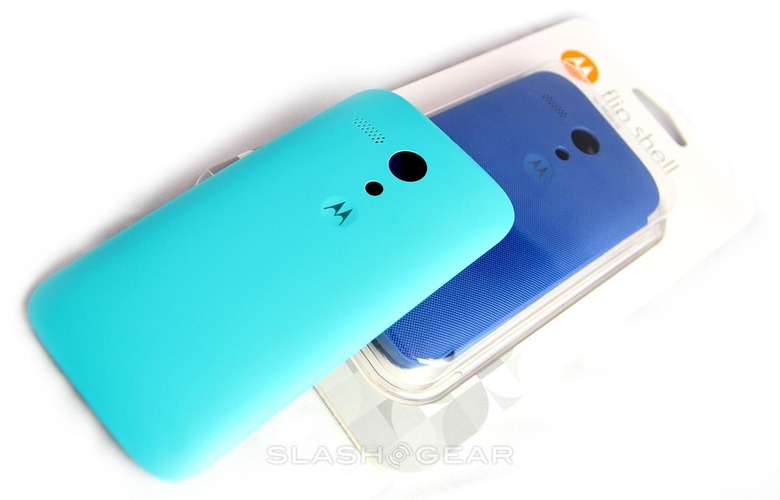
SlashGear: Is there going to be a tension between a compact range that's easier for you to manage, and the differentiated demands of an audience that is ever-more demanding?Steve Sinclair: "That challenge is what's fun; trying to figure out how to unlock that so we can give people the choice that they want. And it's going to take time to get there, but certainly you can see hints of that in the things we're doing today and the things we're talking about doing in the future, that we want to get to that point where we can offer them variety without compromising on things like the software experience and fragmenting our own capabilities and resources so that we can't, you know, update all of our products when it's appropriate to do that."Steve Horowitz: "I think you'll find us continuing, much like you see with X and G, to push the limits of what can fundamentally be done with a smartphone. The idea of a phone that can listen to you at all times, and the screen's always on, that just didn't exist. Until we started doing that with X. So we're going to continue to push those limits, but at the same time there are economic realities to the accessibility of that kind of device."
"Just like in automobiles, so Mercedes or BMW, they'll always have a high-end showcase, and they'll have a product that is more affordable and accessible to a broader population. So even on the higher end we're still going to be focusing on value, but we're always going to be innovating continually at various tiers of the market."
SlashGear: We're seeing more unsubsidized devices; one of the reasons perhaps people were so taken by the Moto G is that it looks so much like the Moto X, but is a far more affordable device. Do you think the big growth is going to be within that midrange, as people start to see the real cost of the devices they used to get for $100-200?Steve Horowitz: "When you look at the markets, there's room for both models. Clearly we've seen tremendous demand for unsubsidized products, but by the same token the upfront cost of a subsidized product is low. So you can get a very high end phone subsidized at a low entry point. So I think the economic and geographic realities will have them both be successful, but I do think that we're at a fundamental inflection point when it comes to value; for what consumers can get."
"If you think of the Moto G, it's a product that costs about the same as one month of a family's smartphone bill, so that changes the way I think people think about phones and devices, when you can get a best-in-class – not even just best-in-class, but super-capable, great experience device – at a price they've never seen before. That's going to change consumers' thinking; it's not an overnight phenomenon, but obviously cost-of-entry is critical."
SlashGear: Android phones went through an arms race of hardware, but we got to a point where, perhaps, phones were "fast enough"; the differentiator becomes the software. Yet there's an interest among certainly the tech-aware audience that they'd like to be as close to pure Android as possible, something Motorola has moved toward.Steve Horowitz: "We are showing, and demonstrating, at Motorola that not only will we update our devices to Android releases quicker than anybody else, but we will continue to enhance our experiences – I mean, we've done 26 updates to our experiences just in the last month or two – so we will continue to move really quickly."
"So I would say that, if people are looking for a device, they're not going to buy a device for any one particular feature or set of features, but they're going to buy a device that is just going to get better over time and that is responsive to them as a consumer. Because, if there are issues we can fix them quickly, and if we're going to add things, we're going to do it at a pace that nobody else is doing it."
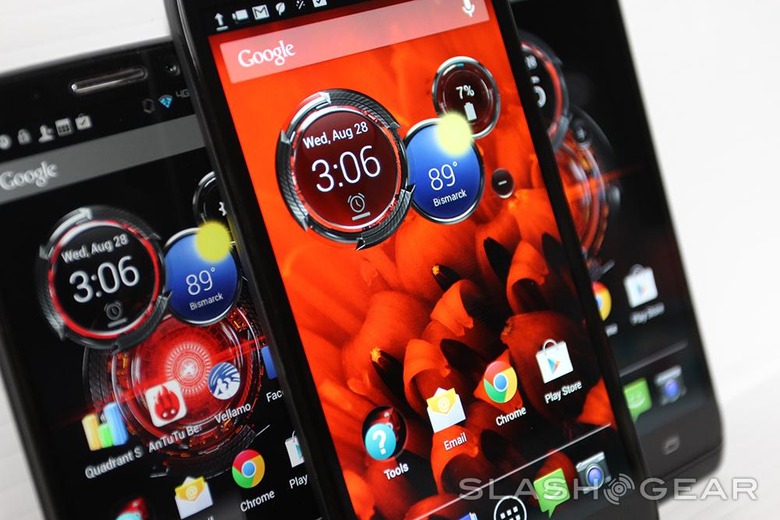
SlashGear: How does being a Google company help with that, or does it?Steve Horowitz: "The way that I view it is, our strategy is not only pure Android but to embrace Google and its services. So if you think about the entirety of what Google offers, whether it's Google Now, or Hangouts, or Google+, these are Google properties that we don't have to do anything. By featuring those, and integrating well with them, and putting them at the forefront, our phone just gets better more quickly because those are the services we rely on. So we really are the best at Google, and a showcase for Android."Steve Sinclair: "Steve's team has created a huge challenge for me on the marketing side, the fact that we are so fast and furiously updating our experiences and capabilities. It used to be, you had to wait until the next big maintenance release or the next big product launch to happen, and you bundled all these new capabilities into that announcement, and tell the world about it. It made it relatively easy to communicate the value proposition of this product with all these capabilities."
"Now it's like, every week, I'm getting the "okay, we just added capabilities to touchless-control, we need to let everybody know about it," – okay! "Oh, we just added iOS calendar and contact migration to Moto Migrate," – okay! "Hey, we just fixed that bug that came out on KitKat, a week after KitKat was launched, and we need to let customers know that we squashed it, we didn't have to do anything else but update that one app it was affecting." It's both a nightmare and it's awesome."
SlashGear: You're competing for eyeballs at point-of-sale. Does that rapid pace of change present a problem because you're trying to keep both consumers and sales associates up to date?Steve Sinclair: "First of all, if you're talking about retail and POS, it's about keeping them up to date: they're our best avenue for making sure people understand those things. At the end of the day, we do step back, we up-level it to "your device is always going to get the latest and greatest; we're not going to abandon it on day one." So it isn't any one feature that's important, it's the fact that you can guarantee from us that you're always going to get the latest OS updates, not only fast, but continually over the life of the phone. You will keep getting new experiences."
"So that's the reputation we want: we don't need to focus on any one thing. It's just great to know that "I'm going to buy this Motorola device and, not only does it look great, but it's only going to keep getting better from a software perspective, and it's not going to backslide when the next version of the OS comes out because it's laden with all these other things people have put on other phones.""
Steve Horowitz: "No consumer products in history have ever done that: where you buy it and it just gets better. Unless you're a real geek and you take the time to go looking for, say, a firmware update on your audio receiver at home, your product isn't getting better. So it really is an important element of why people would buy a phone, and we think that we can do as good a job as anybody, at Motorola, of doing that."SlashGear: We used to see a fairly broad range of smartphone form-factors – clamshells, QWERTY keyboards, sliders, etc – but the segment has effectively coalesced on the monoblock. Do you think that's all we're going to get from now on?Steve Sinclair: "I can't predict the future. There are certainly going to be opportunities for different things, but at the same time we're going to be focused on delivering the best experience, and I don't think going out and doing something crazy is where we'd want to put our resources."
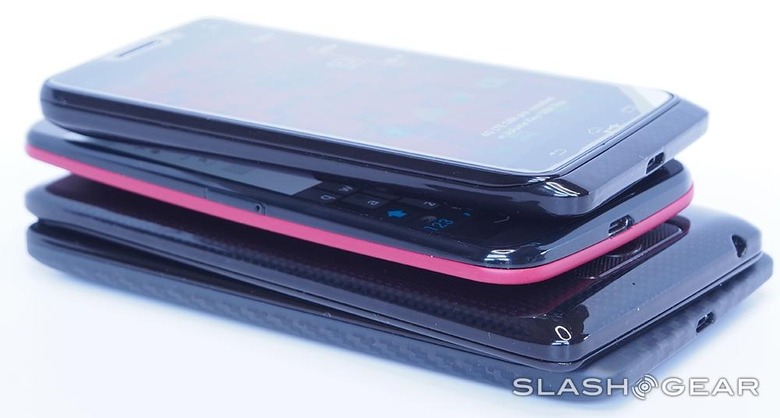
Steve Horowitz: "I think that, certainly this idea of – I'll broaden wearables to the Internet of Things – that really is where things are headed. I'm not going to say there'll be no innovation in form factors, because there will be, I mean even tablets – that was an innovation in form factor that enabled a different time of engagement with information than a phone does."
"But I think that the more interesting dynamic to me is this idea of interacting not just with wearables that you have, but even the dynamics of a home that has an alarm system that's on the web, and if you look at Nest, and thermostats, and now smoke detectors, right, and the ability for your phone to be the hub of all the things that are relevant to you in your life. That is where I think you're going to see a ton of innovation; how do phones fit into that broader ecosystem."
Steve Sinclair: "It's an interaction model thing, which we obviously embraced fully with things like touchless-control: use your voice fully without having the phone in your hand, or anywhere nearby for that matter. I think that's where a lot of the fun stuff is happening right now."SlashGear: Right now there isn't one solid leader in the smart home space. Nest does, say, the thermostat, while Philips does the light bulbs, and Yale does the automatic bolts...Steve Horowitz: "The commonality is the app. Yes, there's no protocol or one leader that offers everything; I think that's frankly healthy. I think innovation comes from competition, so the fact that there are multiple companies that are all out there, providing different solutions, the commonality being that they're connected to the internet. So IP is the connectivity; it's not that there's one interface or protocol that everyone is going to get behind. It's just the fact that they're all connected is going to open up possibilities that are pretty amazing."
"So if you think about contextually-aware phones, the fact that you have an app or even an interface, through an IP layer, means that at some point ... I know Nest, you can go to the app, and you can dial up the temperature if you're coming home early. Well, why can't your phone automatically know where you are – which it does – and be able to talk to, I mean this doesn't happen yet, but automatically configure your temperature for you without you having to do a thing. So I think that's kind of where we're headed, where your phone, because it's the thing that's always with you, it's going to be the center of all this stuff."
SlashGear: Does there need to be some greater communication between Motorola and, say, the Nests and the Philips, so that your devices are better integrated in all that?Steve Horowitz: "I don't think you'll see us be huge movers in a much broader home automation system ecosystem. I think, really, the value is in people doing things they're good at, and really focusing on that area. So we're not going to go and try to create a Nest thermostat, or a thermostat competitor."
"But we will continue to embrace the fact that we're not the only device in a consumer's world, and so we're very open to ensuring that a phone can be a central control point, but without us having to control everything else."
Looking for more CES 2014 coverage? Check out our show hub for all the key news!
